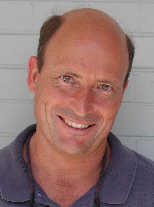
|
Math 3160
Nick Korevaar's home page
|

|
These notes and links are on-line, at the URL http://www.math.utah.edu/~korevaar/coord3160. Please contact me, Nick Korevaar, if you have any questions about teaching this class. My contact information is on my home page http://www.math.utah.edu/~korevaar.
Every instructor should be familiar with and follow the advice in the Departmental teaching guide.
Math 3160 is a 2-credit hour, basic introduction to complex analysis. It is intended primarily as a service course for allied majors such as engineering and physics. Most math majors would be better served taking Math 4200, a more complete and rigorous 3-credit version of the course which also covers more topics. The prerequisites for Math 3160 are grades of at least "C" in single and multivariable calculus (i.e. through Math 2210, 1280, or 1260). In practice most stuents taking Math 3160 will have also seen linear algebra and differential equations (2250 or 2270-2280), and a large number of them will also have taken Math 3150, partial differential equations.
Math 3160 begins with a very quick review of complex numbers and the geometry and algebra of the complex plane. Next, define analytic functions, discuss the Cauchy-Riemann equations, and explore the basic examples of analytic functions. Then introduce complex line integrals, antidifferentiation, and the Cauchy integral formulas. This discussion leads to power series for analytic functions, and Laurent series in annuli. After discussing isolated singularities, poles and residues, the course ends with the residue theorem and the basic example types of contour integration.
You will notice that this topic list does not exactly line up with the more ambitious one in the official UU Math catalog: http://www.acs.utah.edu/GenCatalog/crsdesc/math.html There is not time in this 2-credit course to carefully discuss the latter topics listed there: "conformal mappings with applications to electrostatics, heat, and fluid flow". Still, since these topics will be of interest to many in your audience, it may be worth taking a lecture at some point in the course to survey these sorts of applications.
This is a math course, and so it is important to motivate and explain why the math works. However, this is primarily a service course for other departments such as physics and engineering majors. Since most of the students are actually in these allied fields they will especially appreciate examples which show applications, and a focus on problem solving as opposed to theorem proving. While still explaining where ideas come from and why they work, do tone down the rigor and emphasize problem solving, as compared to what you would do for an audience of Math majors in Math 4200.
Homework should be assigned, collected and graded. Contact Angie Gardiner (gardiner"at"math.utah.edu) for a grader as early as possible. There should be several in-class midterms, and an in-class final exam.
Textbook: Complex Variables and Applications, eighth edition, by J.W. Brown and R.V. Churchill. The current ISBN is 9780073051949.
The course covers most of the sections from chapter 1 through the beginning of chapter 7, i.e. most of sections 1-81. In reviewing the successful teachers of this course, the following seems to be an approximate pacing schedule, breaking the material into about 27 50-minute lectures. (Fall and spring semesters typically have 29-30 class meetings, but you should check.)
Chapter 1, Complex number geometry and algebra, 3 lectures:
1.1-1.5; 1.6-1.8; 1.9-1.11;
Chapter 2, Analytic functions, 5 lectures:
2.12-2.14; 2.15, 2.16, 2.18; 2.19-2.20; 2.21-2.22; 2.24-2.26;
Chapter 3, Elementary analytic functions, 3 lectures:
3.29-3.30; 3.31-3.33; 3.34-3.36
Chapter 4, Integrals, 7 lectures:
4.37-4.41; 4.43; 4.44-4.45; 4.46 (use Green's Thm.); 4.48-4.49;
4.50-4.51; 4.52-4.53;
Chapter 5, Series, 4 lectures:
5.55-5.56; 5.57-5.59; 5.60-5.62; 5.63-5.67;
Chapter 6, Residues and poles, 3 lectures:
6.68-6.70; 6.72-6.74; 6.75-6.76;
Chapter 7, Applications of residues, 2 lectures:
7.78-7.79; 7.80-7.81;
As you can see in comparing the schedule above to the textbook material, the schedule is tight. One possibility to consider, and a strategy I follow in many of my classes, is to schedule one of your office hours in a classroom, and call it an optional problem session. This will encourage students to show up, and you can give help on how to work the homework problems and augment your classroom explanations. If you follow this strategy, either let your students know the time of this optional session as early as possible, or pick the time in consultation with them, during the first day of class; even before the start of fall term you can take advantage of the CIS capability which lets you send emails to your class.
Previous home pages: Recent instructors of Math 3160 here at Utah include Sasha Balk, Nat Smale and Grady Wright, among others. Previous instructors can be excellent resources if you have questions about teaching this class. Here are links to home pages or course material for Math 3160; these may be very helpful as you construct and teach your own course:
http://www.math.utah.edu/~balk
http://www.math.utah.edu/~wright/courses/3160